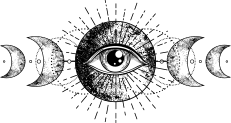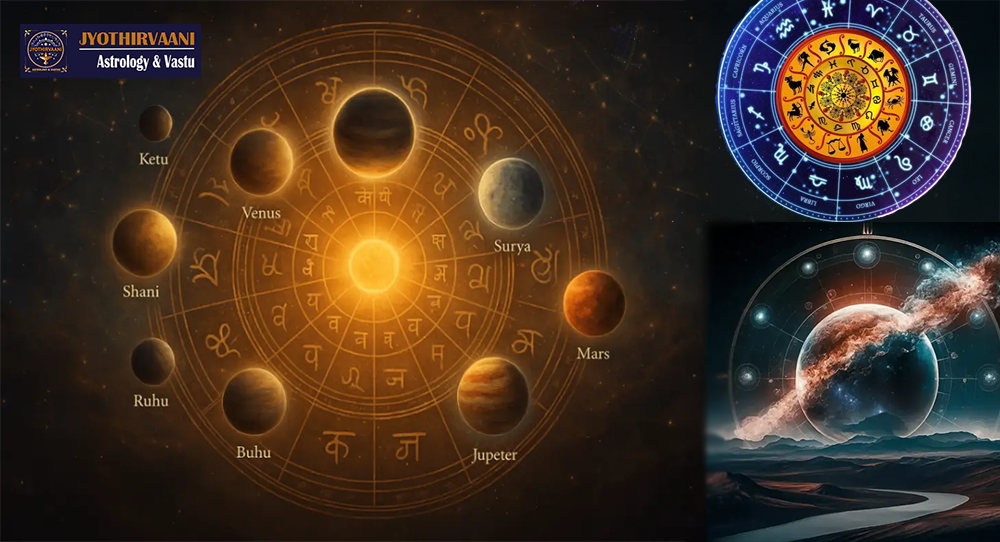Dasha Systems Explained
Timing Events Through Vimshottari and Beyond
In the sacred tradition of Sanatana Dharma, time is not merely a linear progression but a divine rhythm—Kāla, the eternal witness of all creation. Among the many tools that our Rishis have gifted us to understand this rhythm, the Dasha systems in Jyotisha Shastra stand as luminous beacons, guiding seekers through the karmic unfolding of life.
Vimshottari Dasha: The Pulse of the Moon
The Vimshottari Dasha, rooted in the lunar nakshatras, is perhaps the most widely used and revered among all Dasha systems. It spans a cycle of 120 years, divided among the nine grahas, each governing a specific span of years and influencing the native’s life in unique ways.
Chandrama manaso jātah
The Moon was born from the mind of the Cosmic Being.
— Rigveda 10.90.13
This verse from the Purusha Sukta reveals why the Moon is central to Vimshottari—it governs the mind, emotions, and the subtle flow of karma. The Moon’s placement at birth determines the starting point of the Dasha cycle, setting the stage for the soul’s journey.
Each planet’s Dasha is a karmic theater, where the soul enacts its prārabdha karma. For instance, Shani Dasha often brings discipline and trials, but also deep spiritual growth. Guru Dasha may usher in wisdom, expansion, and dharmic alignment.
Beyond Vimshottari: Exploring Other Dasha Systems
While Vimshottari is lunar-based, other systems offer different perspectives:
- Kalachakra Dasha: Rooted in the Siddhanta tradition, this system is deeply mathematical and esoteric, aligning with the wheel of time.
- Yogini Dasha: A tantric system, often used in predictive astrology for sudden events.
- Chara Dasha: Based on the Jaimini Sutras, this system uses signs instead of planets, emphasizing the soul’s evolution through different life themes.
Kālaḥ kalayati bhūtāni
Time governs all beings.
— Krishna Yajurveda, Taittiriya Brahmana
This quote reminds us that each Dasha is a manifestation of Kāla, the divine time principle, shaping our experiences according to our karmic blueprint.
Sanatana Dharma and the Philosophy of Time
In Sanatana Dharma, time is cyclical—Yugas, Kalpas, and Manvantaras reflect the grand cosmic cycles. The Dasha systems mirror this philosophy at the microcosmic level, allowing us to decode the soul’s journey through lifetimes.
Sarvam kālena bhavati
Everything happens in time.
— Mahabharata, Shanti Parva
This profound truth is the essence of Jyotisha. The Dasha is not just a predictive tool—it is a spiritual map, revealing when certain karmas will ripen and how one can align with dharma during those phases.
Krishna Yajurveda’s Subtle Influence
The Krishna Yajurveda, with its emphasis on rituals and cosmic order, subtly informs the timing aspect of Jyotisha. The Taittiriya Samhita speaks of nakshatras, grahas, and yajnas, all of which are intricately tied to the timing of events.
Nakshatrāṇām aham śaśī
Among the stars, I am the Moon.
— Bhagavad Gita 10.21
Here, Sri Krishna reveals the Moon’s supremacy in timing and influence, validating the centrality of Vimshottari Dasha in Jyotisha.
Conclusion: Dasha as Divine Dialogue
For practitioners and seekers at Sri Veda Gayathri Jyothishalayam, understanding Dasha systems is not merely academic—it is a sacred responsibility. By aligning predictions with the spiritual ethos of Sanatana Dharma, one can guide individuals not just through worldly events, but toward moksha, the ultimate liberation.
Each Dasha is a conversation between the soul and the cosmos. Through the lens of Jyotisha Shastra, enriched by the Krishna Yajurveda and the eternal truths of Sanatana Dharma, we begin to see that timing is not random—it is sacred.
Jyotishamayanam chakshuh
Jyotisha is the eye of the Vedas.
— Chandogya Upanishad
Let this divine eye guide us, as we walk the path of light, timing our steps with the rhythm of the stars.
Previous Story
Nakshatras: The Lunar Constellations That Shape Our Karma
Next Story



